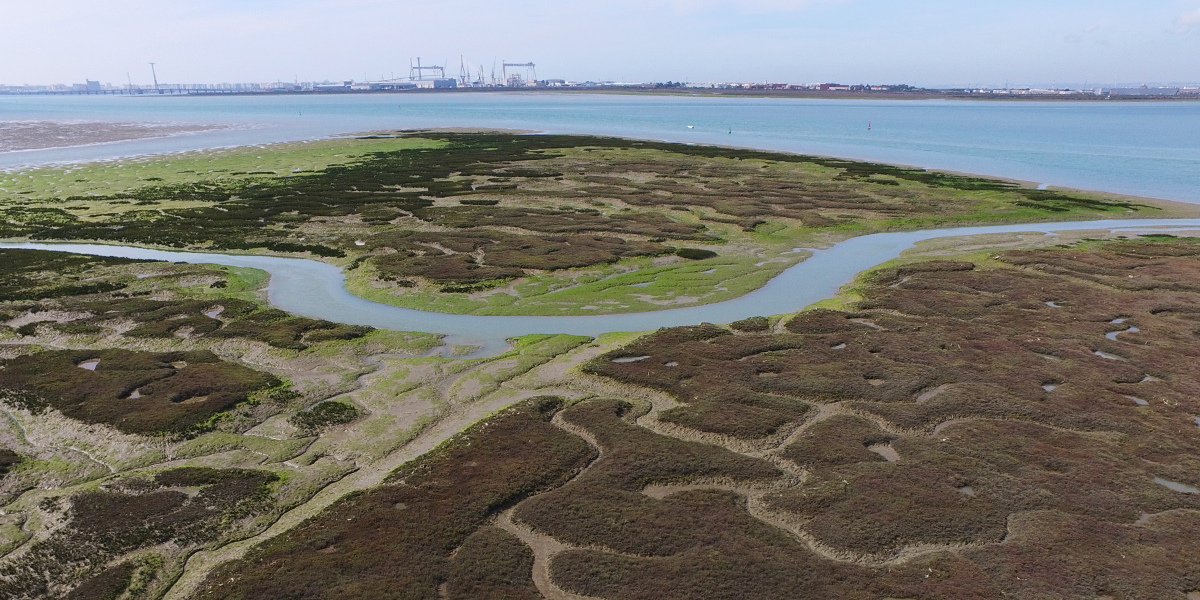Up-close and from space: monitoring stress in salt marshes

Measuring stress
‘Vegetation stress can be examined at the level of cells, leaves, plants, community or population’, says Oteman. ‘Currently, we do not know how these different levels relate to each other’. Monitoring saltmarsh and wetland ecosystems in an efficient way can be crucial in the early observation of possible shifts and the adaptation of strategies for nature conservation and protection.
Optical sensors can measure how vegetation absorbs and emits radiant energy, from which we can derive indicators for stress. Oteman made such reflectance measurements in the field at the leaf and canopy level, comparing the signs of stress in saltmarsh vegetation exposed to, for example, different durations of flooding by the sea. He also applied a radiative transfer model to further investigate these optical signs of stress and combined this model with satellite images to map such indicators for a pioneer saltmarsh.
Structure as stress indicator
Oteman was also interested in finding ways to measure vegetation structure as an indicator of stress. ‘We developed a technique based on Depth from Focus.’ The technique uses a normal DSLR camera to take multiple images from the same location, each with a slightly different focus distance. A 3D representation is created by calculating in which image each pixel is sharpest. The result: a highly detailed representation of the vegetation structure. Oteman: ‘We validated the technique both in the lab and in field situations, and it really worked well.’ Despite the good outcomes, Oteman underlines that the method is labour-intensive.
From space
‘Coastal marshes are vulnerable and often difficult to access’, says Oteman. ‘Our hope was that indicators based on satellite remote sensing could efficiently identify vegetation stress in marshes.’ He explored the use of satellite images from optical (visible light and near-infrared) sensors and radar (microwave) sensors to detect and monitor stress at the community level. Oteman demonstrated remote sensing can be a valuable tool. Yet, he is also cautious, as stress detection is complex, and signs of stress may be both species and system-specific. ‘To conservationists and managers working with salt marshes, I would like to say: Yes, use remote sensing to monitor stress, but be sure to involve remote sensing specialists and ecologists for the right use and interpretation. And maybe the most important point of all: aim to monitor the system as a whole.’
PhD defence
Remote sensing of salt marsh vegetation stress
Bas Frank Oteman
Supervisors: Prof. dr. D. van der Wal and Prof. dr. T.J. Bouma
18th March 2021, 12:30-14:00
University of Twente
Join the defence online
Explaining the science
Bas Oteman explains his research in person. (Dutch only)